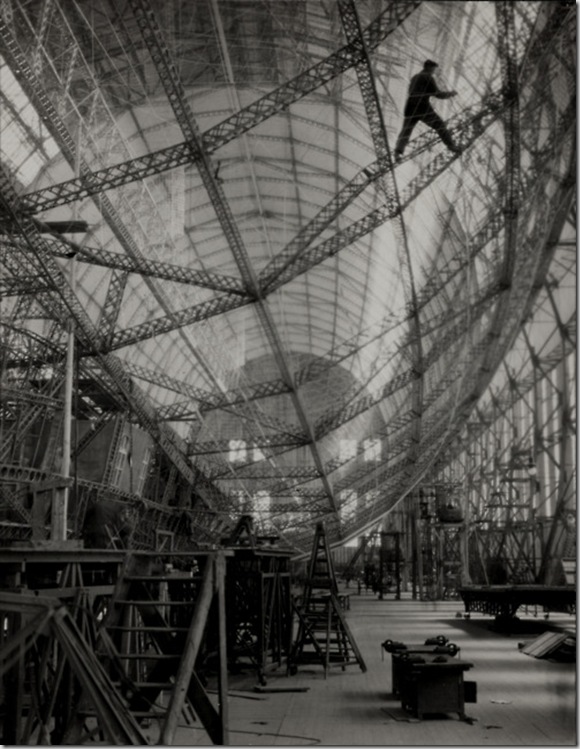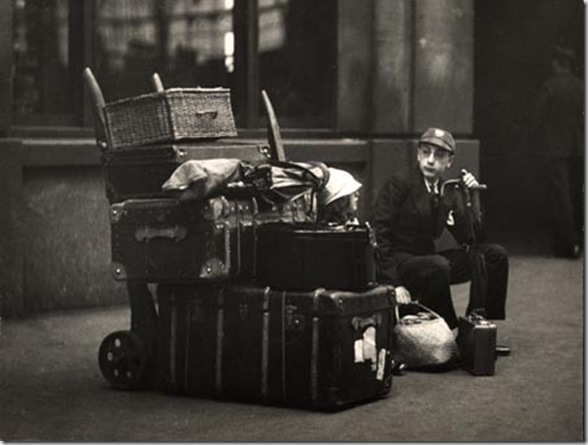Emil Otto Hoppé (14 April 1878 – 9 December 1972) was a German-born British portrait, travel, and topographic photographer active between 1907 and 1945. Born into a wealthy family in Munich, he moved to London in 1900 originally to train as a financier, but took up photography and rapidly achieved great success.

He was “the only son of a prominent banker, and was educated in the finest schools of Munich, Paris and Vienna. On leaving school he served apprenticeships in German banks for ten years, before accepting a position with the Shanghai Banking Corporation. He never arrived in China. The first leg of his journey took him to England where he met an old school friend. Hoppé married his [old school friend's] sister, Marion Bliersbach and stayed in London. While working for the Deutsche Bank, he was becoming increasingly enamoured with photography, and, in 1907, jettisoned his commercial career and opened a portrait studio. Within a few years E.O. Hoppé was the undisputed leader of pictorial portraiture in Europe. To say that someone has a “household name” has become a cliché, yet in Hoppé’s case the phrase is apt. Rarely in the history of the medium has a photographer been so famous in his own lifetime among the general public. He was as famous as his sitters. It is difficult to think of a prominent name in the fields of politics, art, literature, and the theatre who did not pose for his camera.”

Although Hoppé was one of the most important photographic artists of his era and highly celebrated in his time, in 1954, at the age of 76, he sold his body of photographic work to a commercial London picture archive, the Mansell Collection. In the collection it was filed by subject in with millions of other stock pictures and no longer accessible by author. Most all of Hoppé’s photographic work—that which gained him the reputation as Britain’s most influential international photographer between 1907 and 1939—was accidentally obscured from photo-historians and from photo-history itself. It remained there for over thirty years after Hoppé’s death, and was not fully accessible to the public until the collection closed down and was acquired by new owners in America.

In 1994 photographic art curator Graham Howe retrieved Hoppé’s photographic work from the picture library and rejoined it with the Hoppé family archive of photographs and biographical documents, reconstituting for the first time since 1954 the complete E.O. Hoppé Collection. After many years of cataloguing, conservation, and research, the rediscovery of E.O. Hoppé’s extraordinary output can now be seen for the first time in over sixty years.

In his life, Hoppé’s reputation drew to him many important British and North American personalities in politics, literature, and the arts. In the era before the first World War, Hoppé photographed many leading literary subjects and figures from the art world such as Henry James, Rudyard Kipling, John Masefield, Leon Bakst, Anna Pavlova, Tamara Karsavina and other dancers of the Ballets Russes, Violet Hunt, Richard Strauss, Jacob Epstein and William Nicholson, some of whom were included in his 1913 exhibition. In the early 1920s he was invited to photograph, Queen Mary, King George, and members of the Royal family. Other subjects of the 1920s included Albert Einstein, Benito Mussolini, Robert Frost, Aldous Huxley, George Bernard Shaw and A.A. Milne. In the 1930s Hoppé photographed a number of dancers at the Vic-Wells company including Margot Fonteyn, Ninette de Valois, Hermione Darnborough and Beatrice Appleyard.

Working from a studio f irst in London’s Baron’s Court at 10 Margravine Gardens (1907-10), he moved in 1911 to a Baker Street studio. In 1913 he took on a lease of 7 Cromwell Place, occupying all thirty-three rooms of the previous home of Sir John Everett Millais, which later (from 1937) was used by dance photographer Gordon Anthony and subsequently Francis Bacon. Hoppé also made portraits of the street types of London: English cleaners, maids, and street vendors were photographed both in his studio and on the street. He continued this practice of capturing ordinary working men and women throughout his career as he travelled throughout the world.


By 1919 Hoppé had begun to travel the world in search of new subjects and landscapes. His journeys brought him to Africa, Germany, Poland, Romania, Czechoslovakia, the United States, Cuba, Jamaica and the West Indies, Australia, New Zealand, Japan, Indonesia, Singapore, Malaya, India and Ceylon, and the resulting photographs were published in a number of books.
© All rights reserved E.O. Hoppé
© All rights reserved E.O. Hoppé 1945 Australia
© 2011 E.O. Hoppé Estate Collection / Curatorial Assistance Inc
Fonte
eohoppe













Nessun commento:
Posta un commento